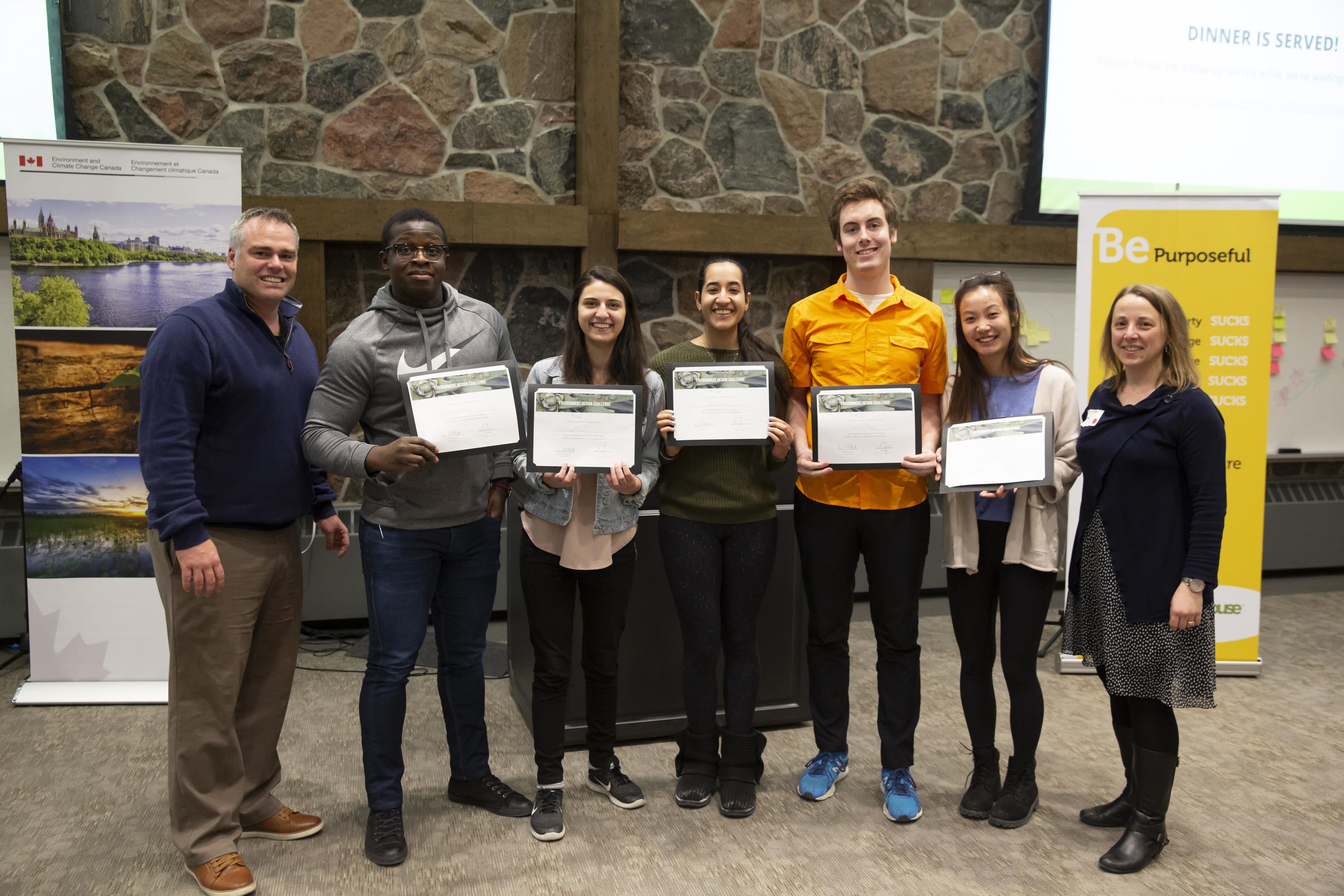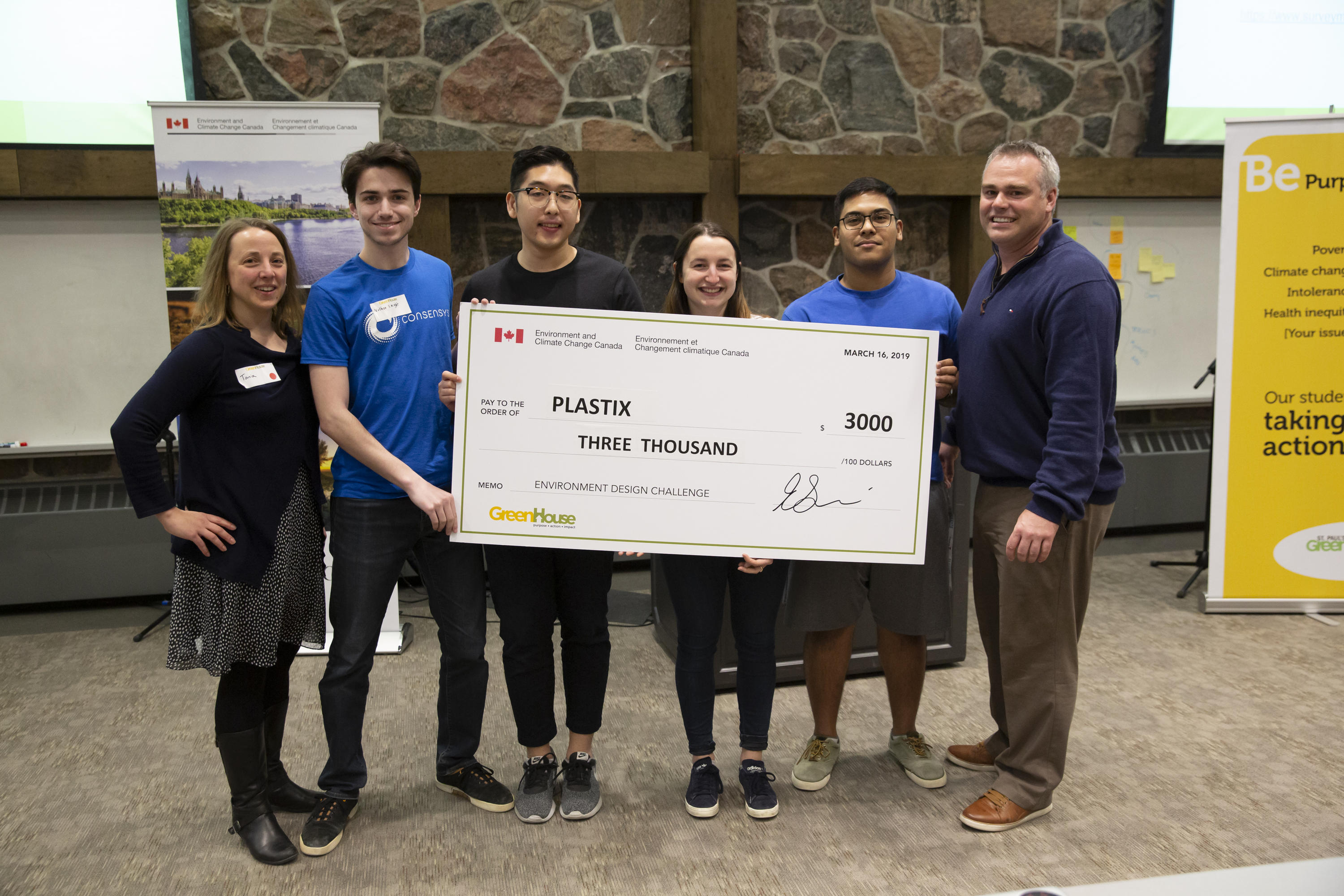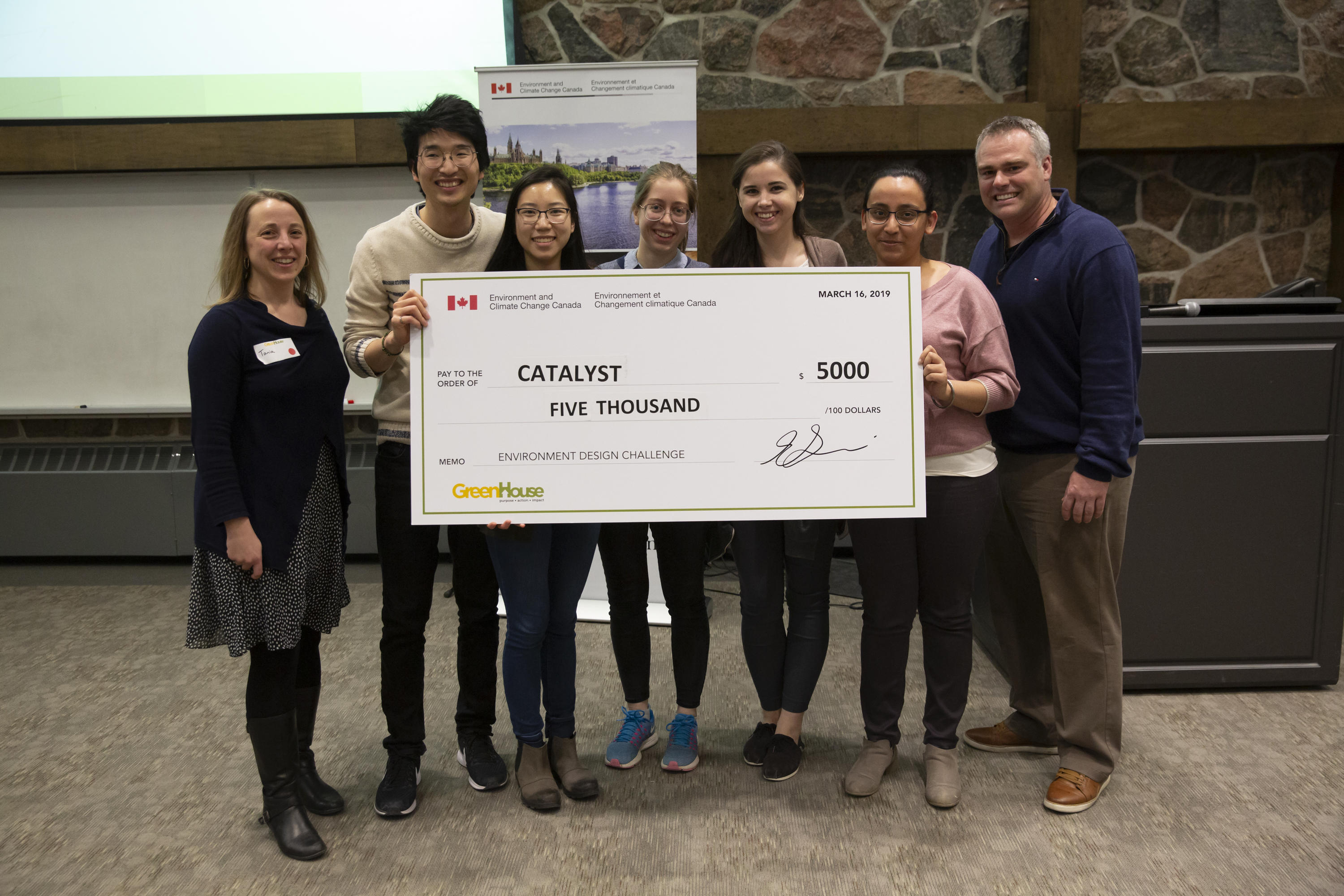Wednesday, March 20, 2019
On March 15, the same day more than a million students globally participated in a strike for climate change, a group of university and college students gathered in the GreenHouse space at St. Paul’s University College to help make the change their peers were calling for, participating in the Environment Design Challenge (EDC), sponsored by Environment and Climate Change Canada (ECCC).
Even before many of these students were born, ECCC had developed their Pollution Prevention (P2) Resource Finder, described as “Canada's one-stop database of online pollution prevention resources.” While the P2 Finder was recently updated, the challenge, according to Lori Fryzuk, head of Pollution Prevention program, was to find “a more interactive digital solution to challenge Canadians, especially youth, to be encouraged and inspired to take everyday P2 actions.”

Sustainabiliteam: Caleb Williams, Jaimie Park, Aleena Singh, Jake Rempel and Carol Yao (winner of $2K)
At the EDC event, Eric Gagne, Director General at Environment and Climate Change Canada, said, “We collect a lot of good information but we aren’t always getting that information to the youth audience. Rather than having government staff develop another government tool, we wanted to tap into the innovative ideas of people who would actually use the tools and could create solutions for themselves and their peers.” ECCC staff began talking with GreenHouse, a social entrepreneurship incubator, and within a short period of time, the possibility of a design challenge to address this challenge became a reality.
For GreenHouse Director Tania Del Matto, the design challenge was a natural fit. “We’re always looking for real-world opportunities for student creativity to be unleashed in a meaningful, impactful way.”
The challenge began with an explanation of the parameters of the challenge as well as an explanation of the P2 Finder. ECCC staff explained, for instance, that while recycling was a positive environmental behaviour, it wasn’t a pollution prevention strategy and should not be the main focus of the design ideas. ECCC staff also specified that while they hoped that solutions could be adapted to other P2 behaviours and environmental issues, they sought solutions at first that focused on the elimination of single-use plastics.
“All right,” said one student at the end of the preliminary session. “Let’s do some design thinking!”
Nine teams came together from UWaterloo, Wilfrid Laurier University and Conestoga College. Over the next twenty-four hours, participants attended workshops led by GreenHouse and ECCC staff on topics such as ideation, wireframing, business models and pitching. They could work in various locations around St. Paul’s or remotely, getting sleep as they chose. Mentors circulated among the teams, offering insights and asking questions.

Plastix (left to right): Nathan Knight, Chris Tran, Zoe Nahmiash, Fardeen Chowdhury (winner of $3K)
By Saturday afternoon, teams submitted a one-minute video and business model canvas to the panel of judges, who included those with digital and user experience as well as environmental business expertise. By 4:30 p.m., six finalist teams were announced, and began live-pitching their solutions. The judges deliberated before choosing the top three designs.
Third prize ($2000) was awarded to Sustainabiliteam, a group who had met only the day before, and whose solution was a web plugin that could connect with ecommerce platforms, giving consumers suggestions about alternative more sustainable purchases. Second prize ($3000) was presented to Plastix, a group who proposed an app that would allow users to track their daily consumption of plastic, with elements of games, a social platform and educational content as well as incentives from green corporate partners. The winner of the competition was The Catalyst – a team whose solution aims at eliminating single-use plastics in the food industry through a map-based app that could connect users with zero-waste or eco-friendly food businesses.

Catalyst (left to right): Gene Shim, Emily Lo, Lorien Boyce, Natalie Wennyk and Milan Preet Kaur (winner of $5K)
Students noted that the challenge helped them reflect on their own pollution prevention behaviour as well as talking about it with peers. Several groups plan to continue to work on their ventures, perhaps with the support of GreenHouse or ECCC. One team member also observed that having government reach out like this had changed her view of government, while the workshops had filled in gaps in her formal education learning about design.
As for the government, Fryzuk says, “The challenge far exceeded our expectations,” while Gagne adds, “This agile approach was really exciting for us, allowing ideas to take shape in hours rather than in months.”
ECCC hopes that some of the ideas will go on to take lasting hold in our culture and positively change behaviours towards preventing pollution.